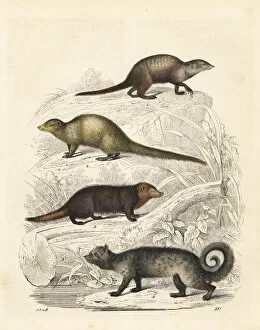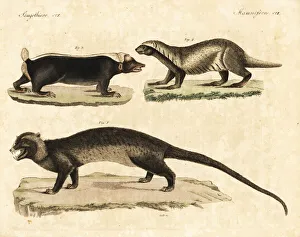Paradoxurus Collection
Paradoxurus, also known as the Asian palm civet, is a fascinating creature that plays a unique role in the ecosystem
All Professionally Made to Order for Quick Shipping
Paradoxurus, also known as the Asian palm civet, is a fascinating creature that plays a unique role in the ecosystem. These small mammals are primarily found in Southeast Asia and are known for their ability to digest coffee cherries and excrete the beans, which are then collected to make one of the most expensive coffees in the world - Kopi Luwak. Despite their cute appearance, paradoxuruses have sharp claws and teeth that they use for hunting insects, small mammals, birds, and fruits, and are excellent climbers and spend much of their time high up in trees searching for food. Unfortunately, paradoxuruses face threats from habitat loss due to deforestation and illegal wildlife trade. Conservation efforts are being made to protect these animals and ensure their survival in the wild. Next time you enjoy a cup of Kopi Luwak or spot a paradoxurus in its natural habitat, take a moment to appreciate this remarkable creature's important role in nature.












